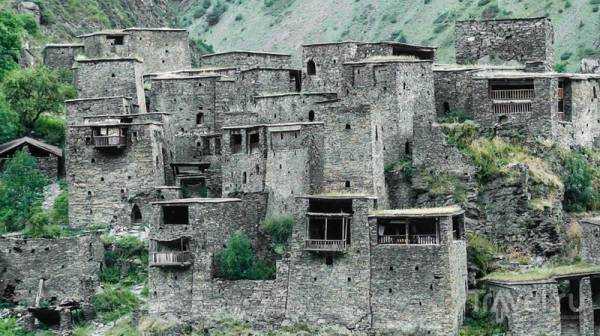
Shatili is a Khevsur fortified village from Vazha Pshavela's poem "Aluda Ketalauri." Kistin thieves, severed hands used by children to play, and slaughtered bulls at the sanctuary—it was all here. The houses had loopholes instead of windows, so they could shoot back at mountain bandits. Each tower-house had its own owner. The severed hands of Kistin (Chechens) thieves were nailed to the walls of the houses. Those who were caught were the ones. The more hands, the more honor. And the Kistins, in turn, sacrificed Khevsurs on the graves of their murdered relatives. So, read Pshavela, and welcome to Shatili!
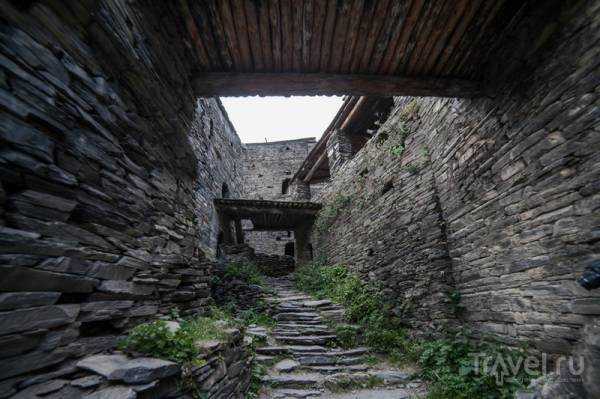
The Shatili fortress from the inside. The houses are built of slate. The roads are too.
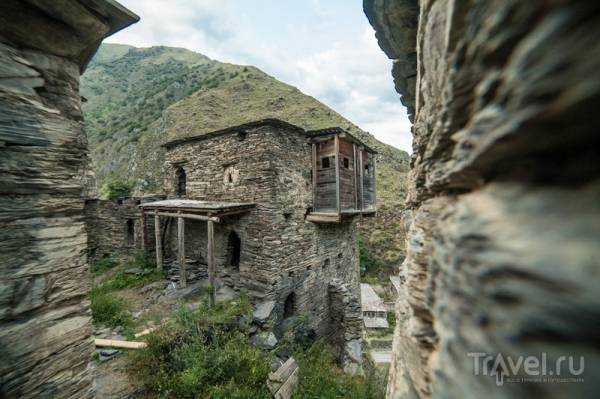
The wooden balconies were added later. For a long time, the walls simply contained holes left by beams. It's possible that there was indeed a balcony here, but it served as a toilet. In Georgia, there are still village houses where toilets are located outside, and waste simply falls into the street below.
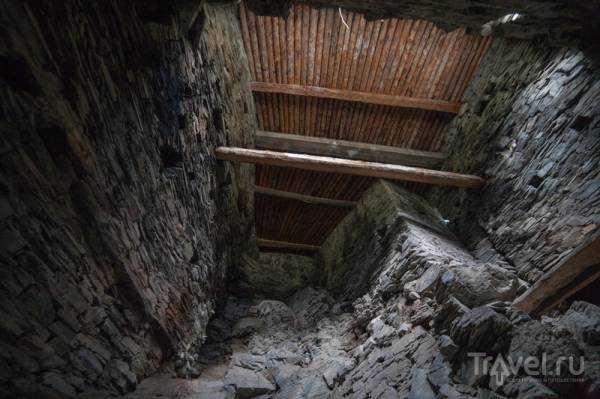
Inside one of the buildings. It's hard to tell how exactly it was constructed. It's clear there were more wooden floors.
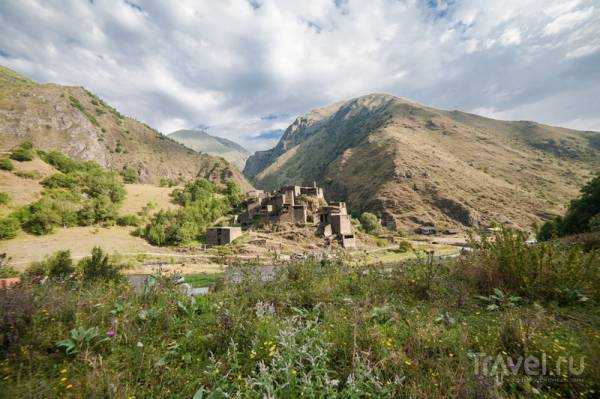
From the outside, menacing Shatili resembles a fairytale town from a Disney cartoon. All that's missing is a rainbow.
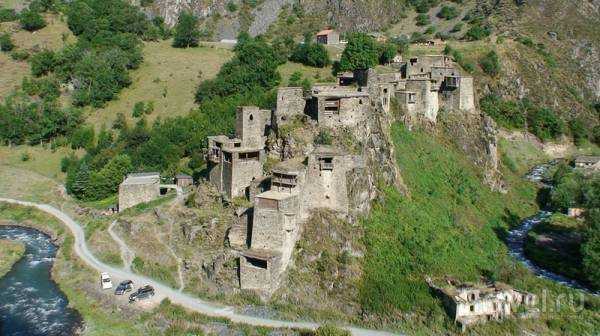
A view from the hill. Several jeeps are parked below. It's possible to get to this area without a jeep (I've checked), but it's a shame to lose a car.
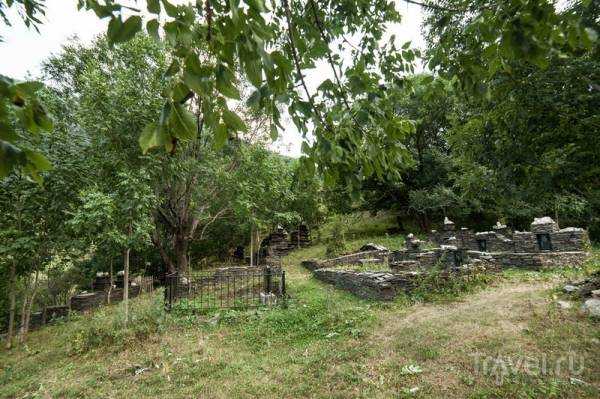
There is a chzhvari sanctuary above the city, and a cemetery nearby.
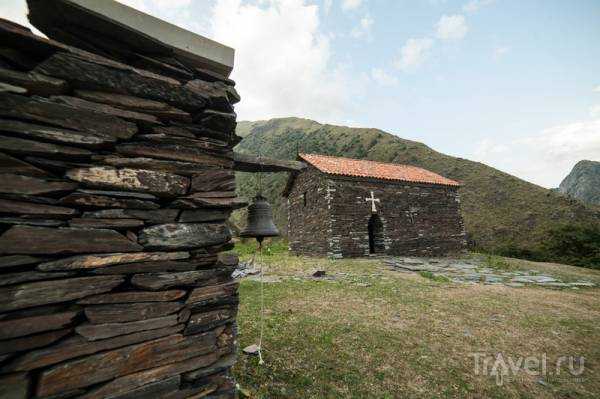
An Orthodox church was recently built here.
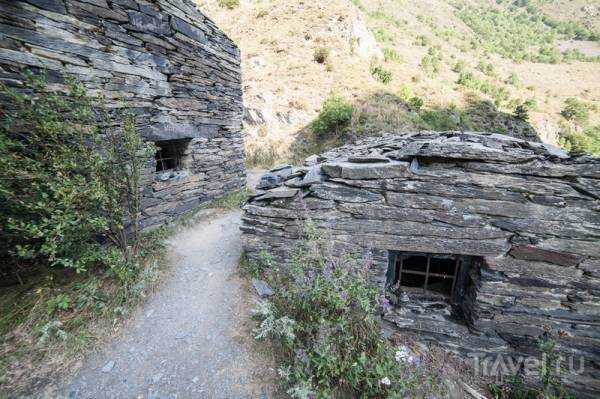
A plague cemetery outside of Shatili. In the 19th century, Georgia was ravaged by plague and smallpox. In mountain villages affected by the epidemic, people were buried alive. These crypts have no doors. Roofs or walls were dismantled and then re-walled up. The only contact with the outside world for those condemned to death was through a window. But this connection was short-lived. The epidemic claimed people quickly.
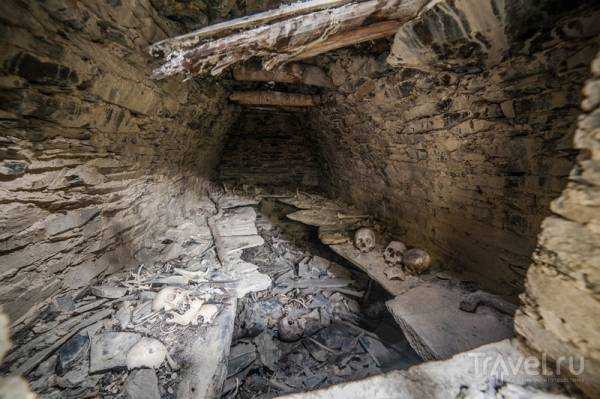
Skeletons of the unfortunate.
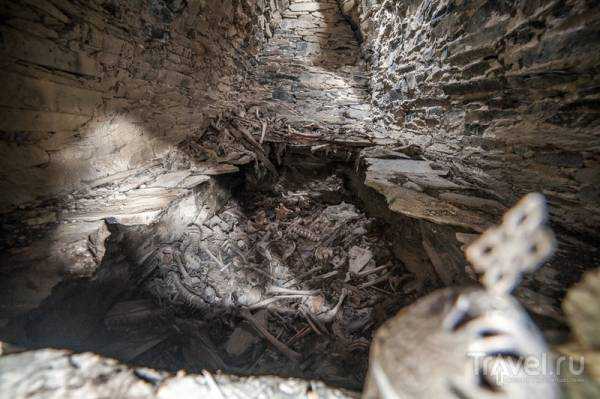
Lots of skeletons.
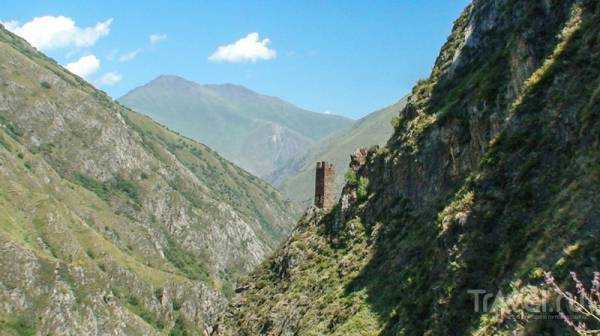
A watchtower in the village of Mutso, 15 km outside of Shatili.
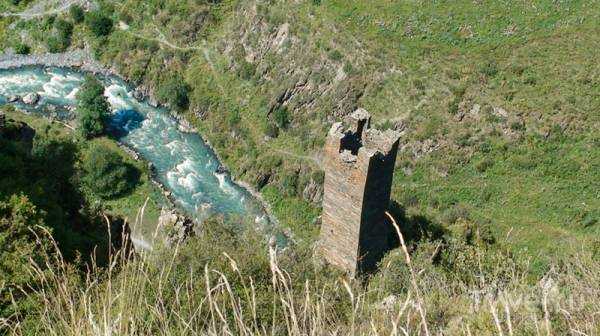
The same, but from above. A bit crooked, but it served its purpose as a guard.
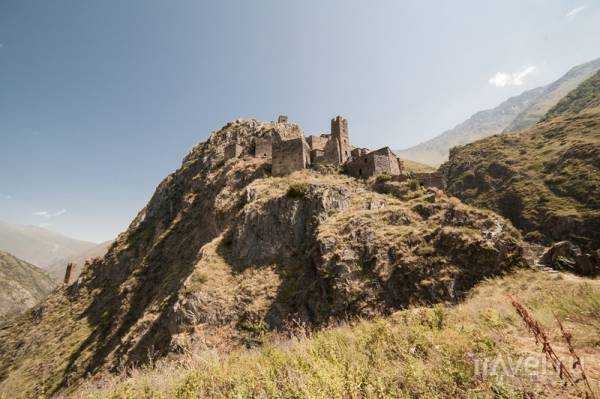
The 16th-century "Dead City" of Mutso lay abandoned for many years. But now the city isn't so dead. Restoration work is underway. It's hoped that in a few years the city will be almost habitable. Hotels, restaurants, and a tourist information center will be built here.
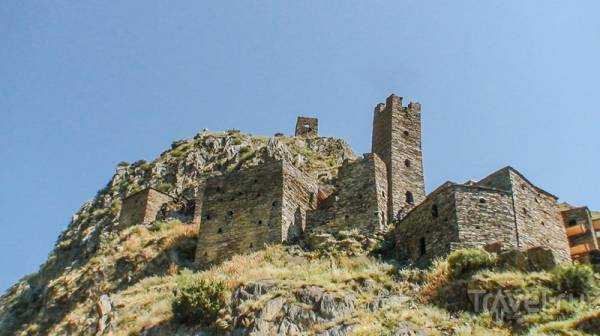
Mutso is big. The central tower won't be restored. They say it's too dangerous—it'll fall over. Let it stay crooked.
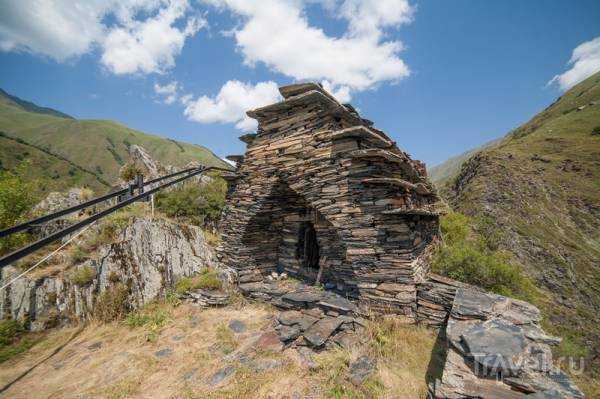
Orthodox Church.
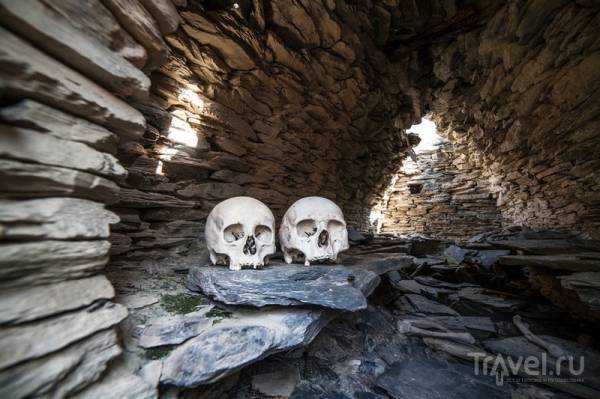
Another plague burial ground. This time in Mutso.
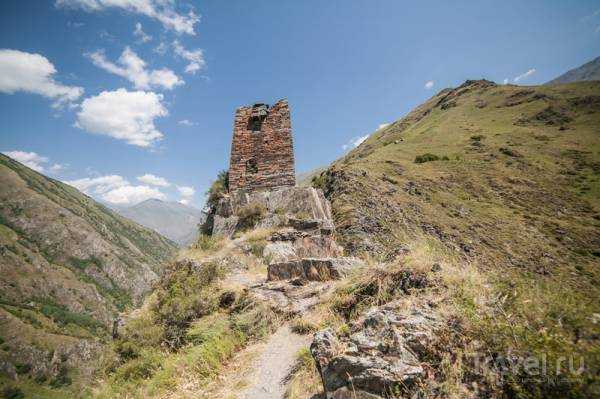
Watchtower above the city.
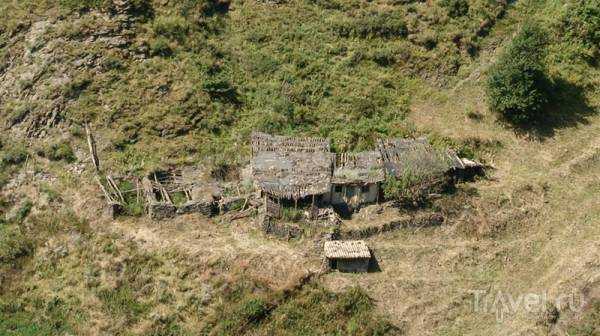
View of the village from above.
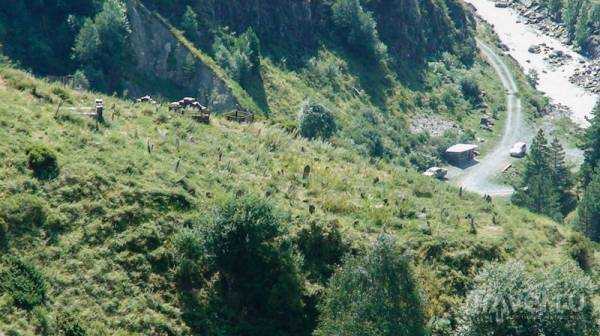
A Muslim (apparently) cemetery on a hillside.
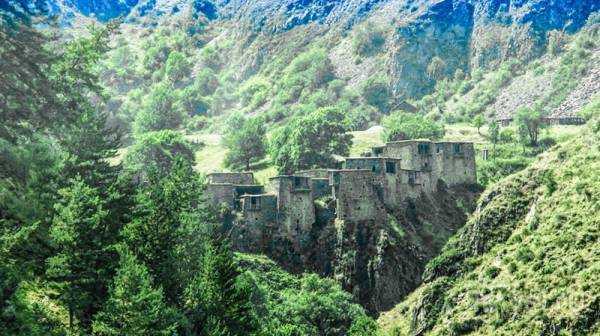
Return to Shatili. One last look at the legendary fortress town—and then back to Tbilisi.
Source: travel.ru

